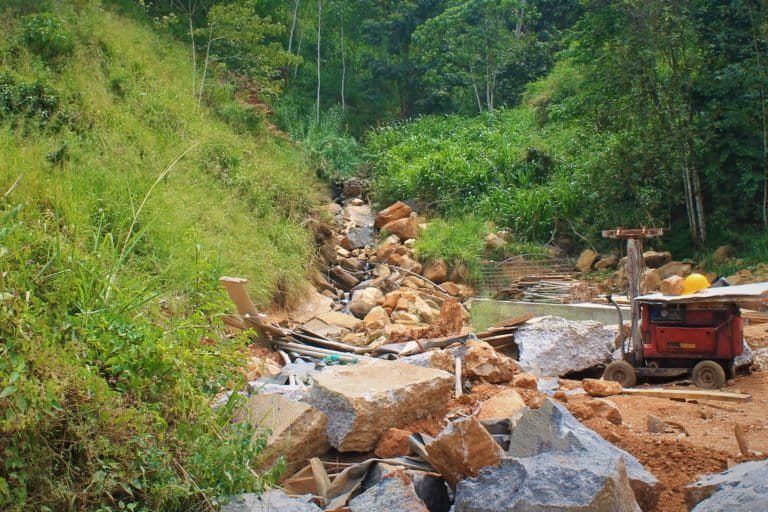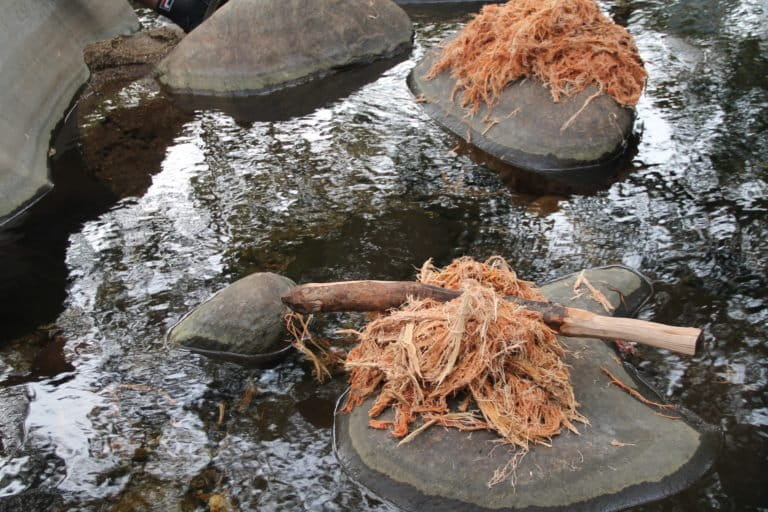- A recent conservation assessment of Sri Lanka’s freshwater fish has come up with a total of 139 species, of which 61 are found nowhere else on Earth.
- The new assessment showed that 74% of endemic freshwater fish are threatened with extinction: 12 are critically endangered, 24 endangered, and nine vulnerable.
- Many of Sri Lanka’s freshwater fish groups have undergone significant changes and the new study sheds much needed light on their taxonomic diversity.
- Most of Sri Lanka’s freshwater fish are found outside protected areas and are thus affected directly by all the major drivers of biodiversity loss such as habitat loss and degradation, overexploitation, pollution, invasive alien species, and climate change.
COLOMBO — Surveys carried out in the early 1980s in the many reservoirs in Sri Lanka’s dry zone showed abundant populations of the red-fin labeo (Labeo lankae), an endemic species of frewshwater fish.
Reports indicated the fish was also available at local fish markets. But decades later, it has disappeared from the reservoirs it was known to inhabit, a fate it shares with many other freshwater fish across Sri Lanka. In fact, a recent assessment of the island’s freshwater fish shows three-fourths of endemic species are facing extinction.

The National Red List is updated regularly as taxonomic revisions result in adding or removing species. The 2020 assessment shows 139 freshwater fish species, 61 of which are found only on the Indian Ocean island.
Of the endemic species, the red list classifies 12 as critically endangered, 24 as endangered, and nine species as vulnerable. It also lists five species as near threatened, two as data deficient, and the rest as being of least concern in terms of their conservation status. Thirty-six non-endemic freshwater fish species were also assessed under the red list review, with eight listed as threatened.

Threatened endemics
Sampath Goonetillake, IUCN Sri Lanka’s senior program officer for biodiversity and one of the assessors of the National Red List, said the assessment will be accepted globally as it was carried out according to the global red list criteria. “The assessment should not be viewed as a mere listing of species under different levels of threat but as a scientific yardstick to execute specific conservation actions,” Goonetillake told Mongabay.
About 28% of Sri Lanka’s land area has been declared protected areas, managed either by the Department of Wildlife Conservation (DWC) or the Forest Department. Most of the species listed as threatened, endemic or range-restricted are found in habitats located outside this protected areas network and are severely impacted by human activity. “There had been several local extinctions, and if this trend continues, it may lead to extinction of entire species as well,” Goonetillake said.

Rohan Pethiyagoda, an expert in freshwater fish and leading taxonomist who previously served as deputy chair of the IUCN’s Species Survival Commission, said Sri Lanka’s protected areas network has almost no relevance to aquatic organisms. As a result, streams and stream-side habitats are at risk, he said. While freshwater fish face many threats, Pethiyagoda identified three key issues: “First, the pollution of streams and rivers by sewage and agricultural chemicals. Next, there is the loss of riverside shade. It is important to recognize that almost all wet-zone endemics are strongly associated with shaded streams,” Pethiyagoda told Mongabay.
The third major threat is the increasing number of non-native fish taking over Sri Lanka’s inland waters, whether from the inland fisheries industry or as escapees from the ornamental fish industry, Pethiyagoda said.

Still, there are some positive developments. Several species, such as the red-fin labeo were listed as critically endangered in 2012, but today have seen their conservation status eased to endangered. “This is because surveys done afterward discovered different populations,” Goonetillake said.
Pethiyagoda said conservation initiatives are possible. Once local communities are made aware of the value that freshwater fish carry, they take great interest in contributing to their conservation, he said. He cited the examples of the critically endangered Bandula barb (Pethia bandula) and Asoka barb (Systomus asoka), both endemic species, which are now strictly protected by local communities in Galapitamada and Kitulgala in Kegalle district, in Sri Lanka’s lush Sabaragamuwa province.
“I had a hand in describing both these species around 1990, and the moment the local people were shown the fish and told that it was unique to their stream or river, they became very protective of it,” Pethiyagoda told Mongabay. Giving local communities ownership in conservation initiatives is arguably the best, and probably only, method of conserving such species, he added.

Conserving freshwater fish
The 2020 freshwater fish red list assessment includes recommendations for conservation. One is to launch islandwide systematic surveys of freshwater fish, as recent evolutionary studies show there are species yet to be described and that taxonomic clarity is needed for several already described species.
Another recommendation is to conduct population assessments of at least the critically endangered species. The recent evaluation process revealed that some nationally threatened species with a wide distribution range could not be listed under any of the IUCN threat categories, Goonatilleke said.

Development of conservation action plans have been proposed for the threatened fish species found only in Sri Lanka and to evaluate the feasibility of ex-situ conservation, where breeding of critically endangered species occurs.
“We want to use the national red listing effort as a springboard to introduce much-needed urgent conservation actions for the endemic threatened freshwater fishes,” Padma Abeykoon, head of the Biodiversity Secretariat of Sri Lanka’s Ministry of Environment and Wildlife Resources, told Mongabay.
As a means of generating funds for the vital conservation initiative, Pethiyagoda recommended tapping the country’s two main state-owned utility companies, Ceylon Electricity Board (CEB) and the National Water Supply and Drainage Board (NWSDB). Both agencies rely for their operations on the freshwater habitats of the Kelani and Mahaweli rivers; they earn more than $300 million combined from hydropower and urban water supply, respectively. At present, there is no mechanism to reinvest in the natural resources used for hydropower generation or water supply.
“Investing in the conservation of these natural resources is of direct benefit to them,” Pethiyagoda said. “If just 1% of the earnings can be reinvested in conservation efforts, it can make a difference.” A 5% tariff on water and electricity could generate around $15 million a year and have a transformative impact not just on the aquatic biodiversity of these two rivers but all natural waterways in the biodiversity rich island, he added.
Banner image of the Bandula barb (Pethia bandula), a critically endangered fish species restricted to a single stream in central Sri Lanka. The species’ conservation is highly dependent on the local community. Image courtesy of Sampath Goonetillake.
"fish" - Google News
July 31, 2020 at 05:35PM
https://ift.tt/3fiKJ89
New assessment shows 74% of Sri Lanka's freshwater fish threatened with extinction - Mongabay.com
"fish" - Google News
https://ift.tt/35JkYuc
https://ift.tt/3feFffJ
Bagikan Berita Ini














0 Response to "New assessment shows 74% of Sri Lanka's freshwater fish threatened with extinction - Mongabay.com"
Post a Comment